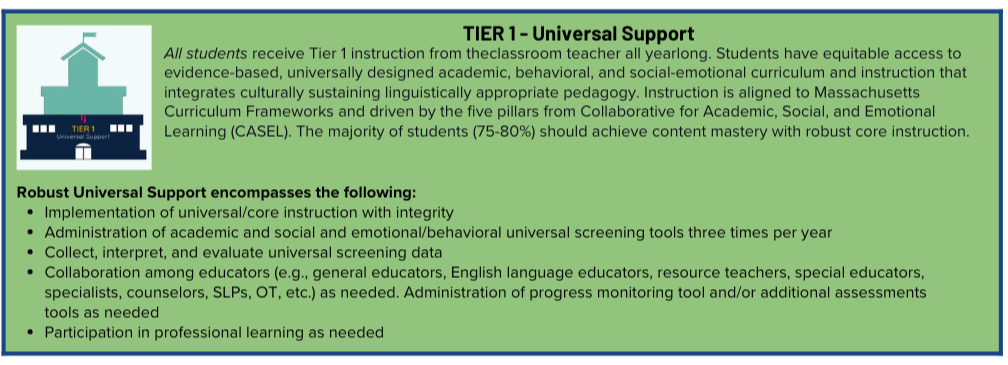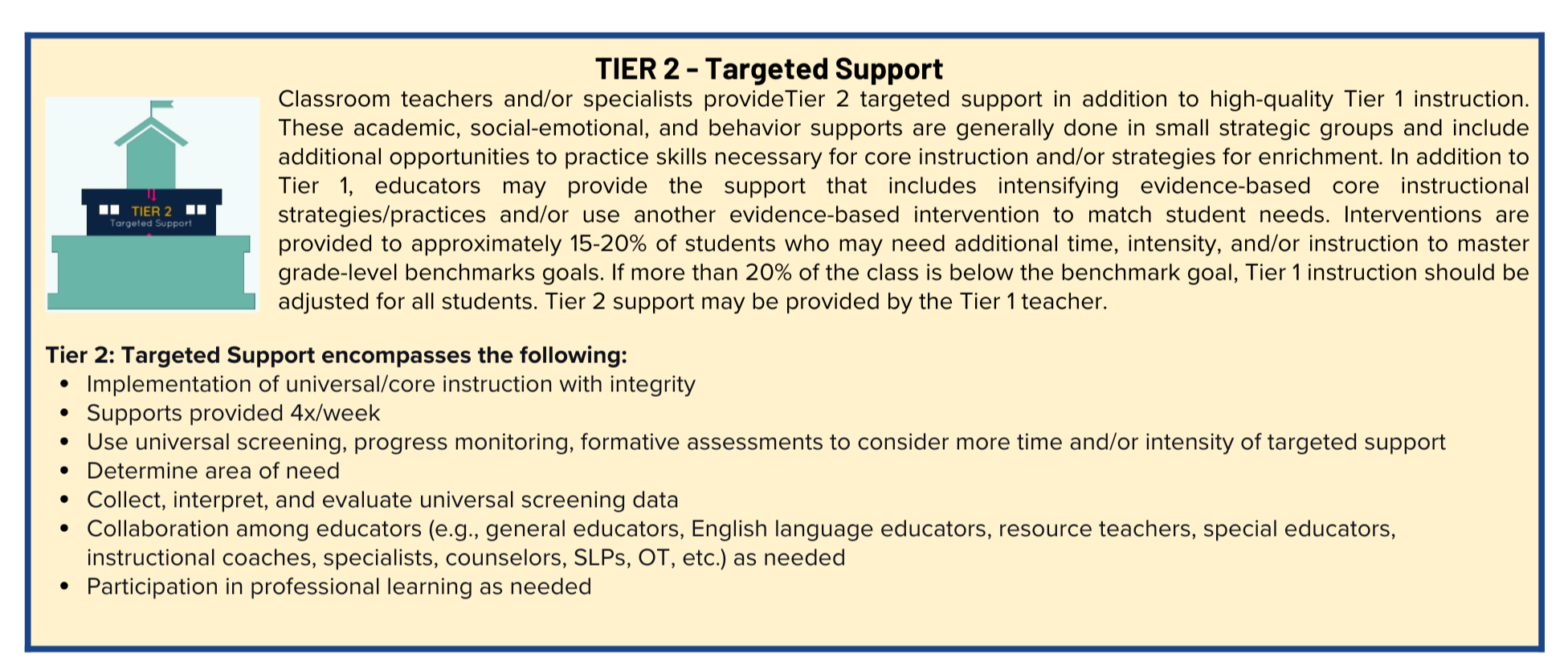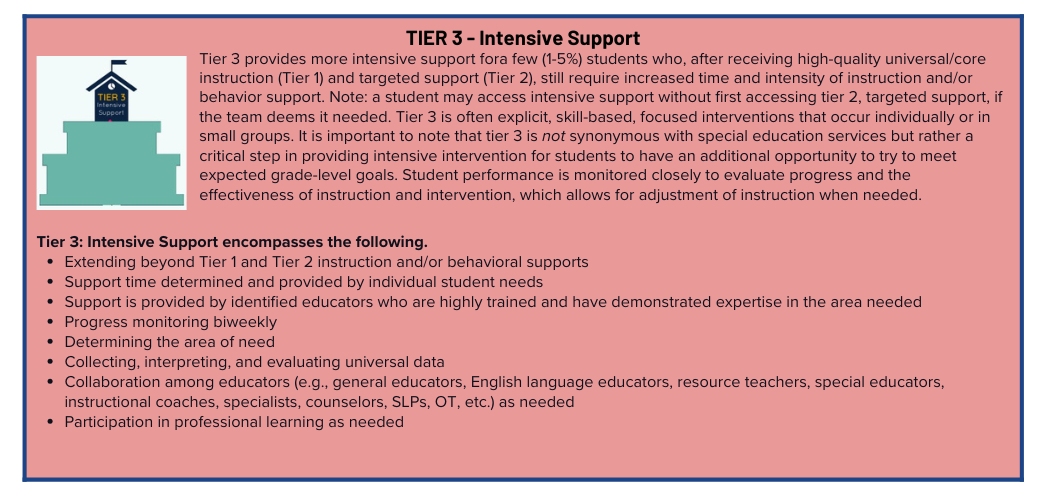Multi-Tiered System of Support (MTSS)
Our District remains committed to implementation of a robust and thoughtful Multi-Tiered System of Support (MTSS) model that will support students and the adults who work with them. We recognize that a successful shift to an MTSS model will require an arc of time that is mindful of both the technical and adaptive work and changes that accompany this transition. We appreciate and offer an important reminder that this important work will continue to evolve over the course of a few years. This transition needs to be supported by professional learning, review and adjustments of processes that should be refined, and continuous self-reflection on our approach to this work. This will require change and coordination within and between schools, and compromises in service of developing consistent and shared language and practices. To that end, the district offers this document as one resource to launch this work within and amongst our schools.



Why is a Multi-Tiered System of Support Needed in our District?
What is a Mult-Tiered System of Support?
Conditions of MTSS and a Road to Implementation
The Multi-Tiered System of Support: A Blueprint for MA Educators by the Department of Elementary and Secondary Education (DESE) outlines the conditions necessary for a robust, effective system. The conditions are grouped under three drivers: Leadership; Competency; and Implementation.
Schedule Elements and "Look For" Questions for Monitoring
The following elements and “look for questions” can be used to evaluate and monitor how well the schedule supports the school, classrooms, and students (taken from the DESE MTSS Self-Assessment):
Roles and Responsibilities
Document outlining Roles and Responsibilities of Personnel in an MTSS.
Roles and Responsibilities Elements and “Look For” Questions for Monitoring
The following elements and “look for questions” can be used to evaluate and monitor how well the defined roles and responsibilities support the MTSS model (taken from the DESE MTSS Self-Assessment):
Data Protocols and Processes
Data meeting norms - Click Here for Guidance on Data Meeting Norms
Templates and flowcharts for data meetings such as ILT meetings
Data Meeting Protocol - to be used for Data Team meetings
Meeting worksheet to be developed
Data Protocols and Processes Elements and “Look For” Questions for Monitoring
The following elements and “look for questions” can be used to evaluate and monitor how well our data protocols support the MTSS model (taken from the DESE MTSS Self-Assessment):

Tier Elements and “Look For” Questions for Monitoring
Tier Elements and “Look For” Questions for Monitoring
The following elements and “look for questions” can be used to evaluate and monitor how well the defined tiers support the MTSS model (taken from the DESE MTSS Self-Assessment):
*Adapted from original work by the Acton Boxborough Regional School District, Teaching & Learning Department, 2022
